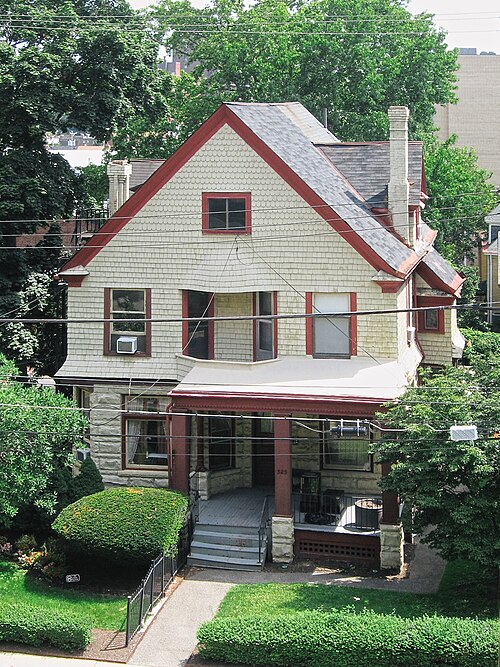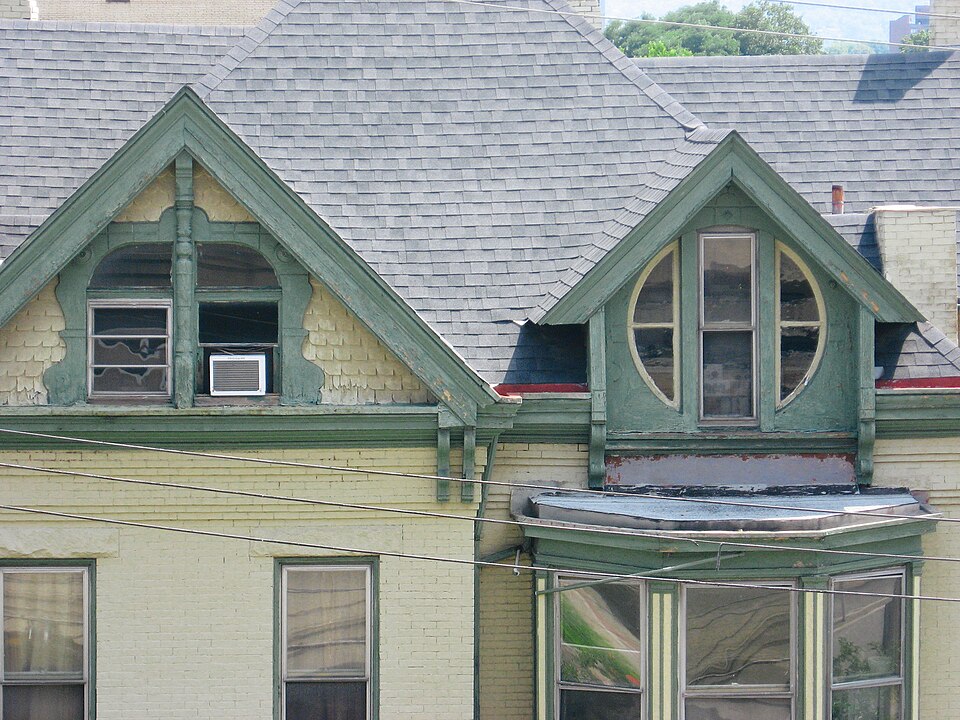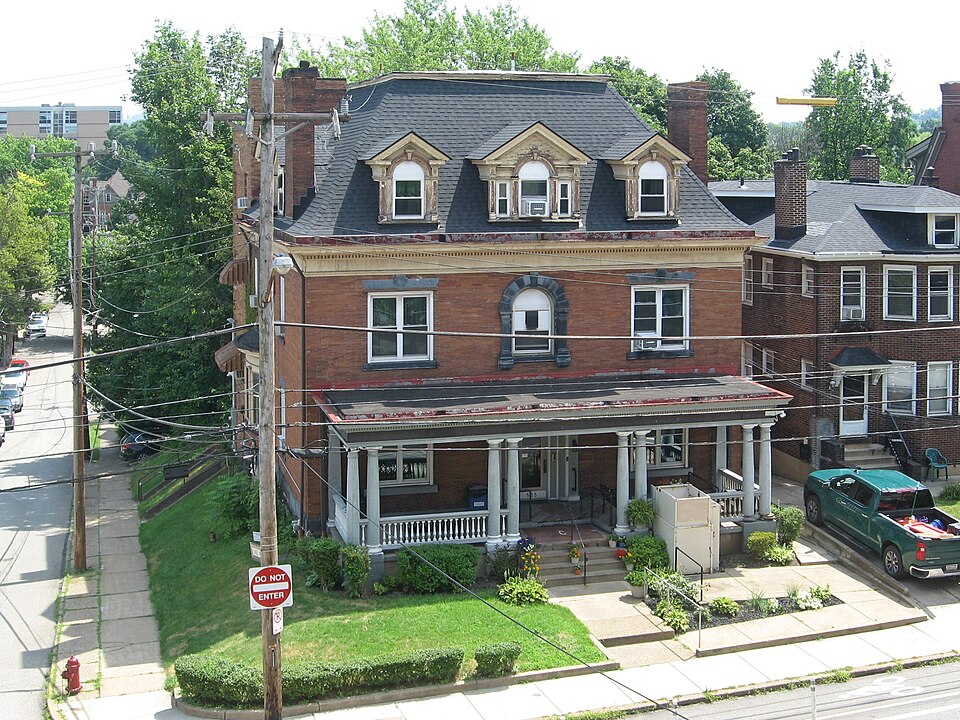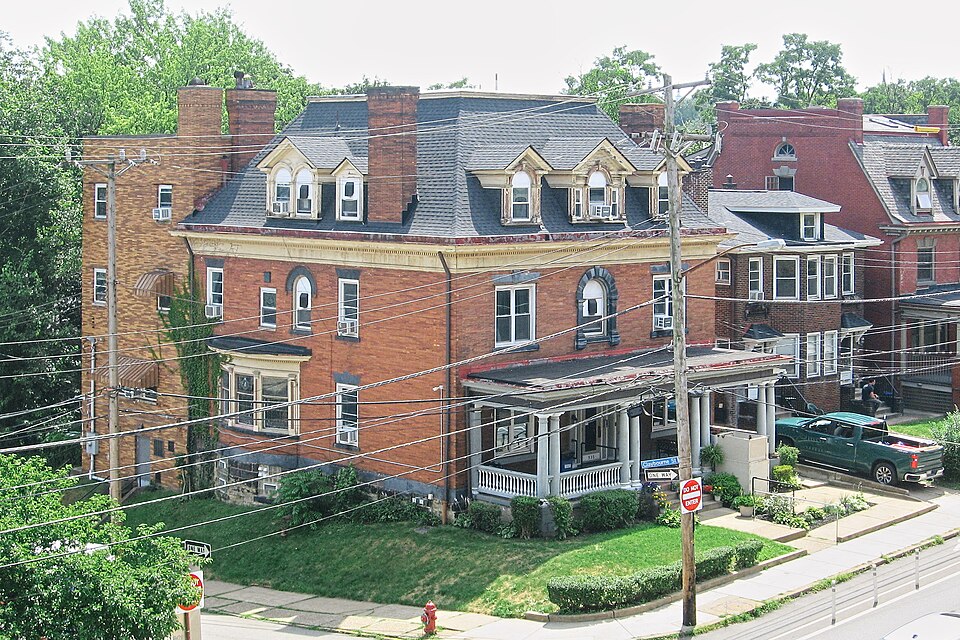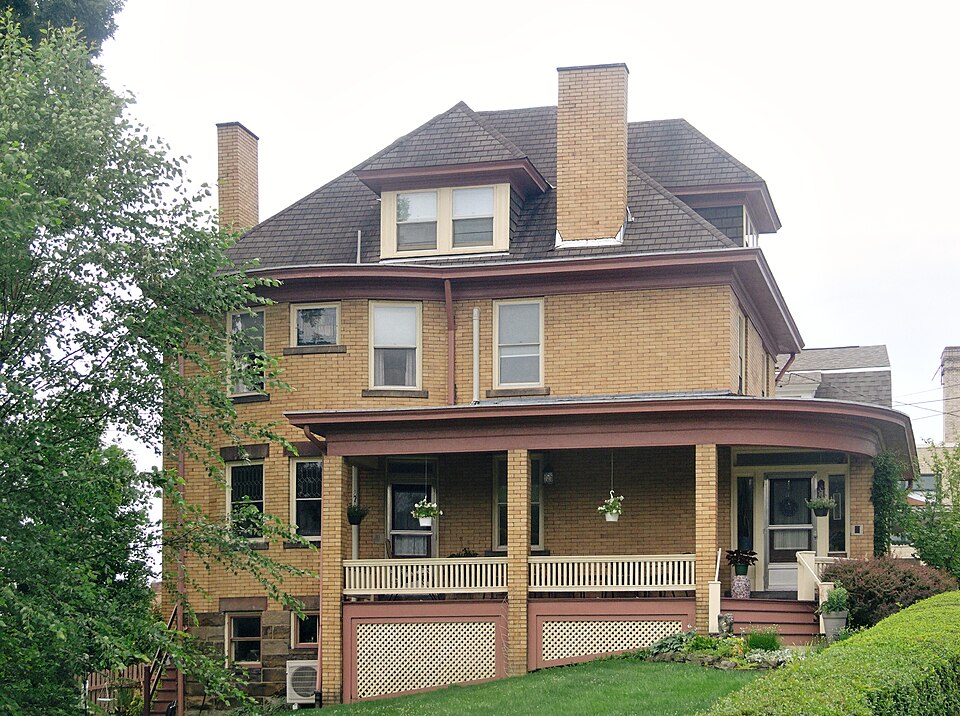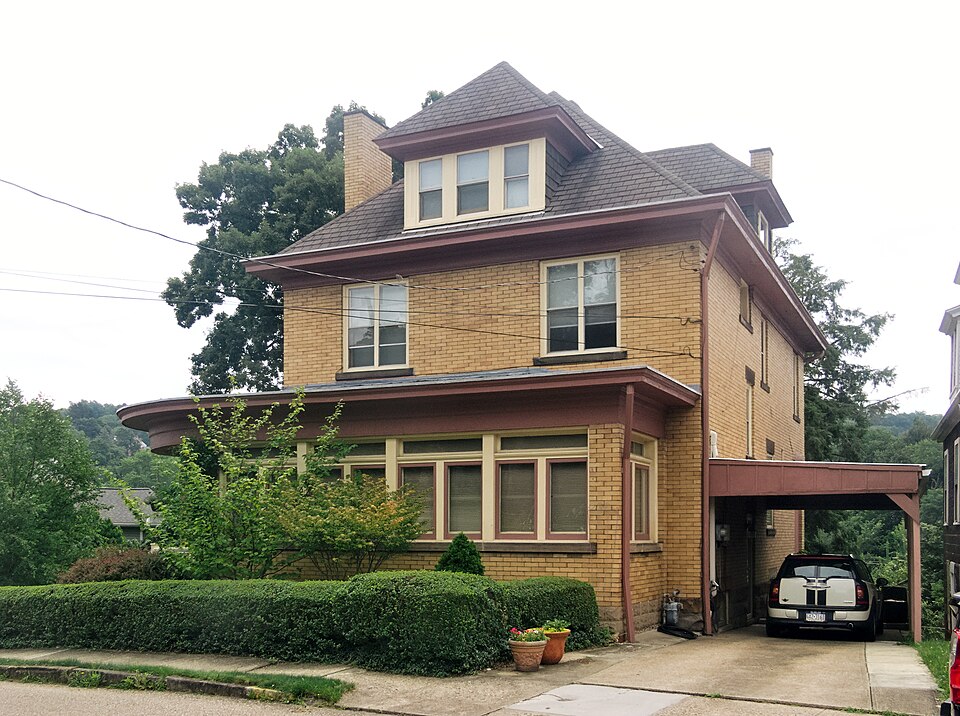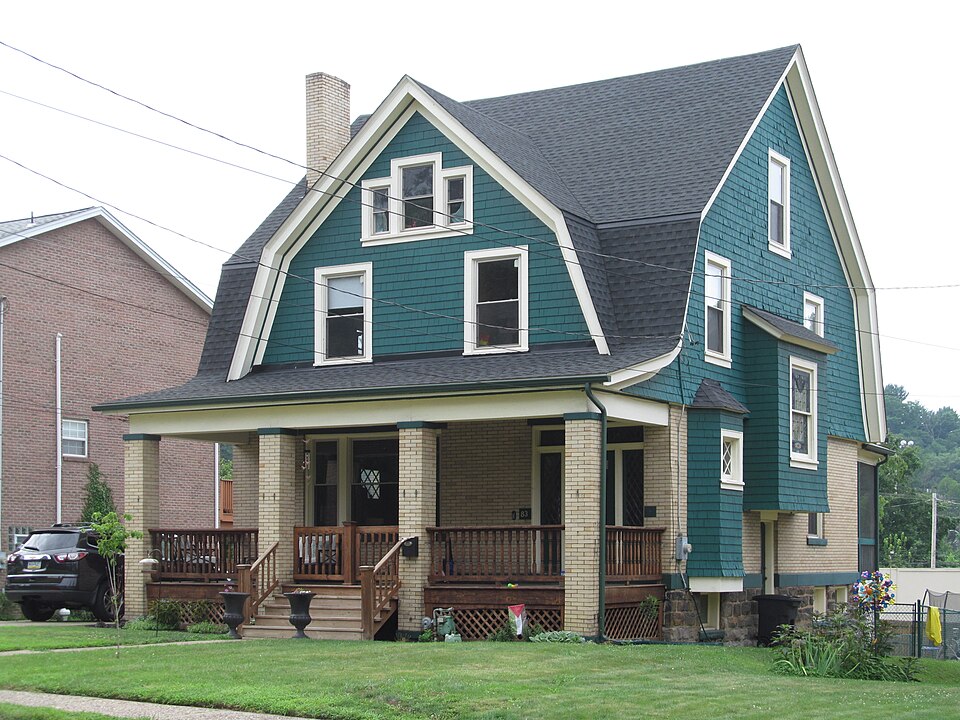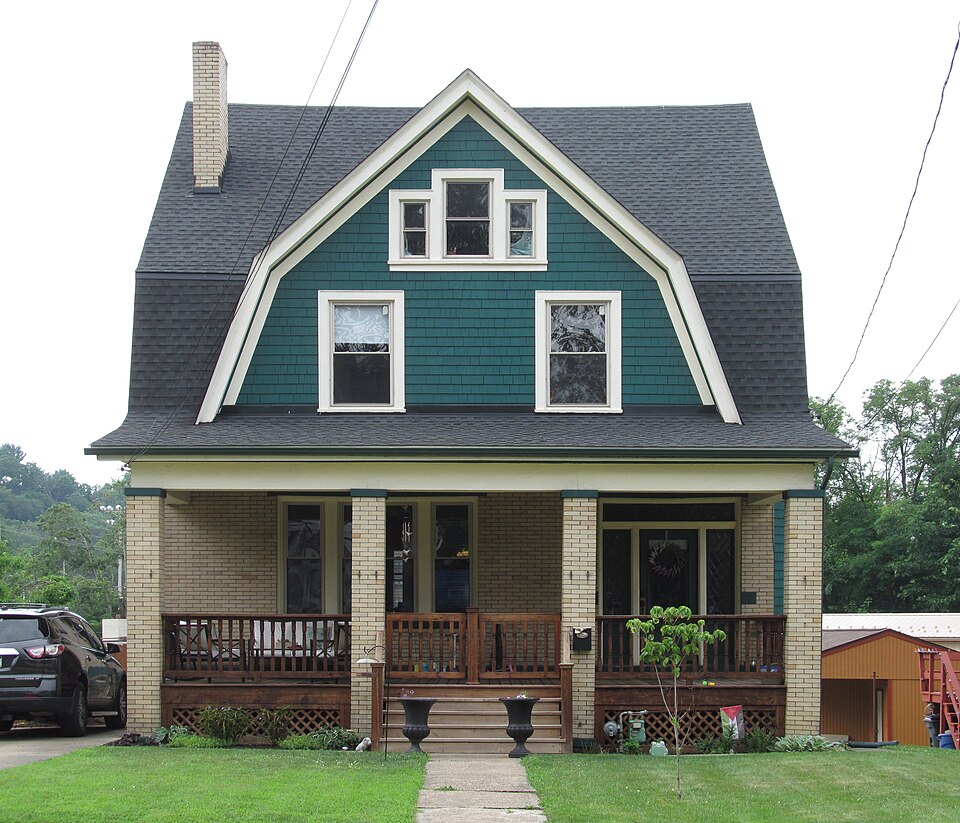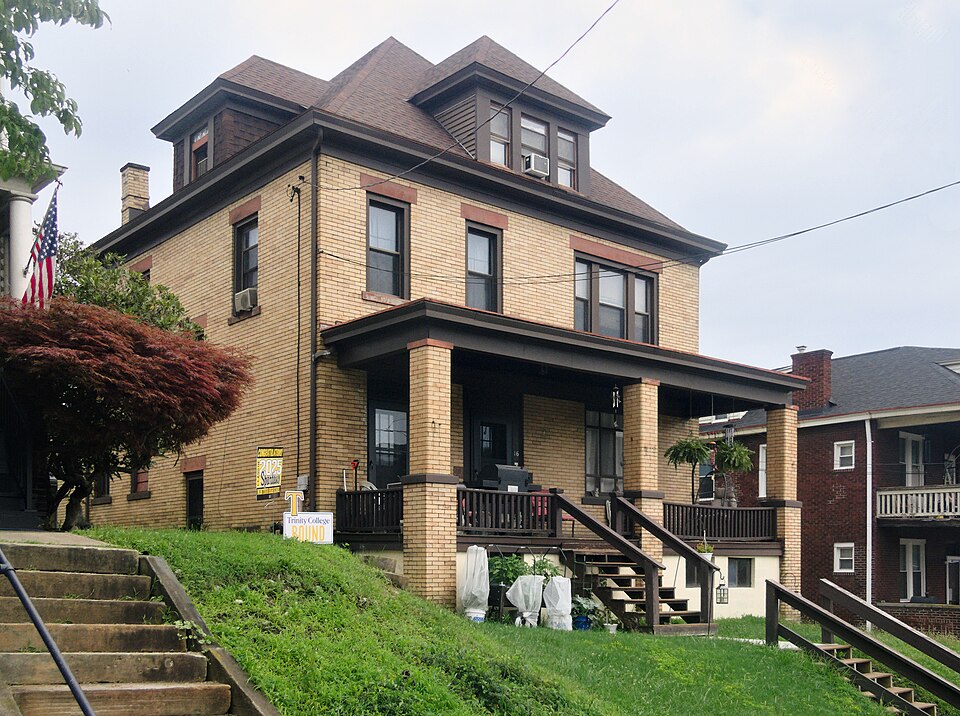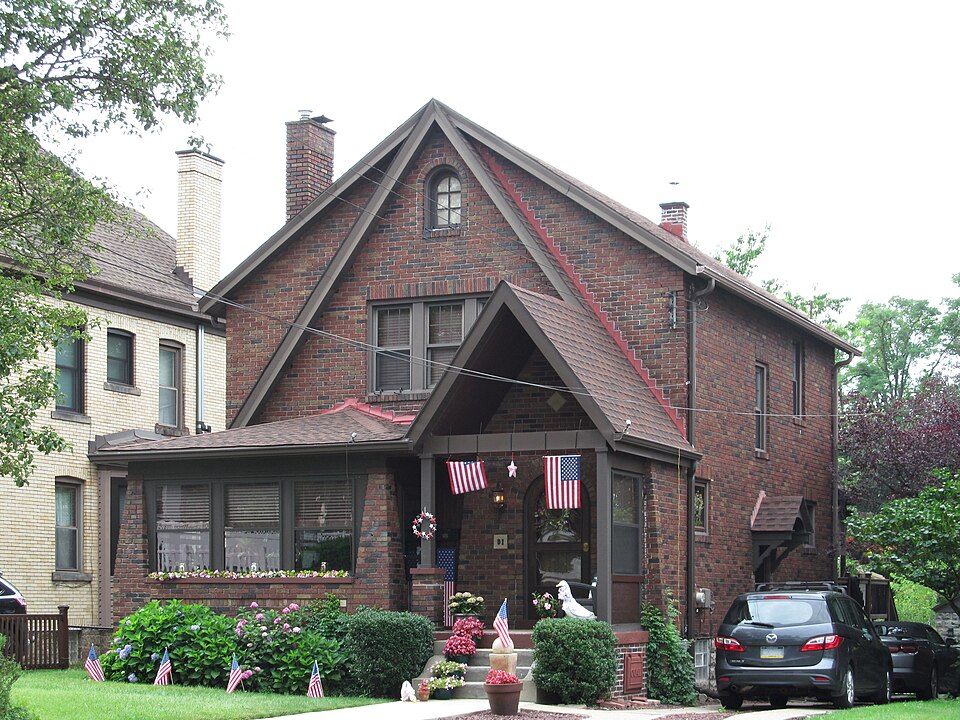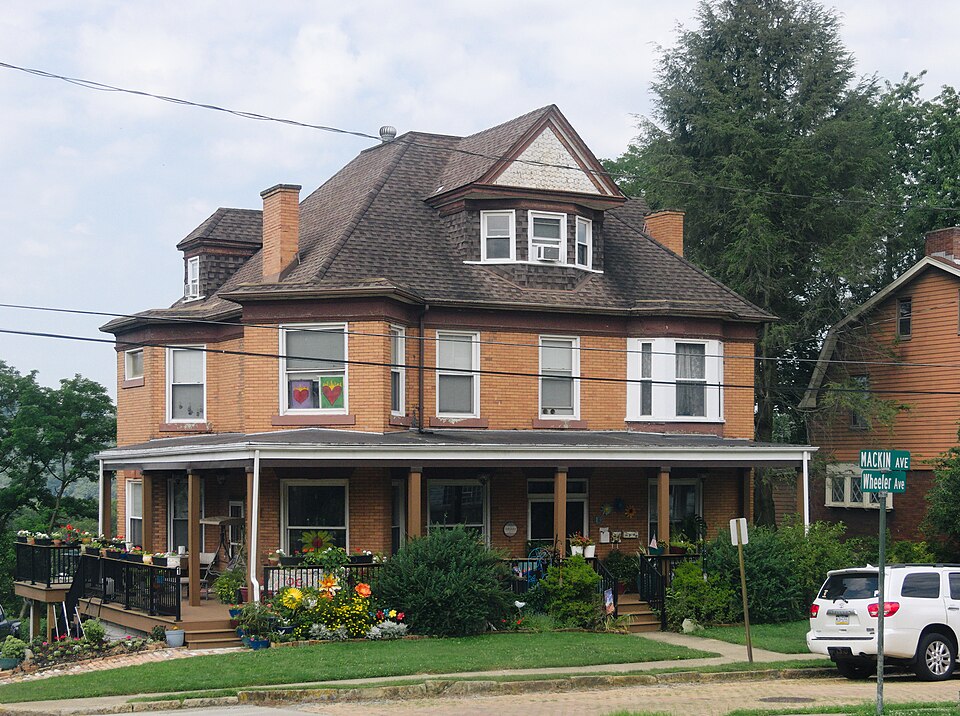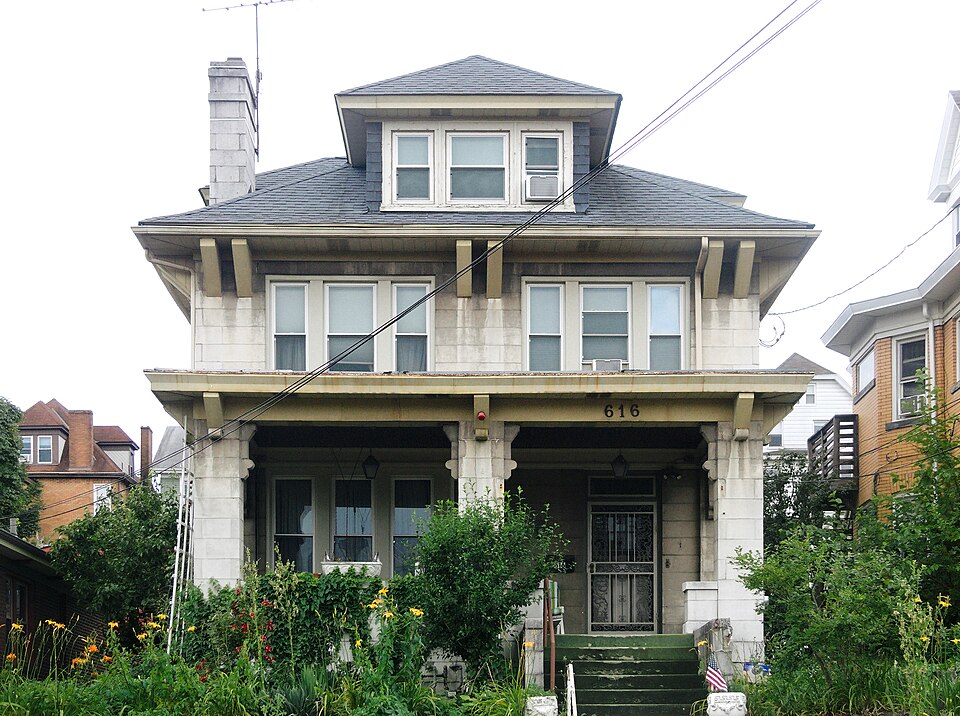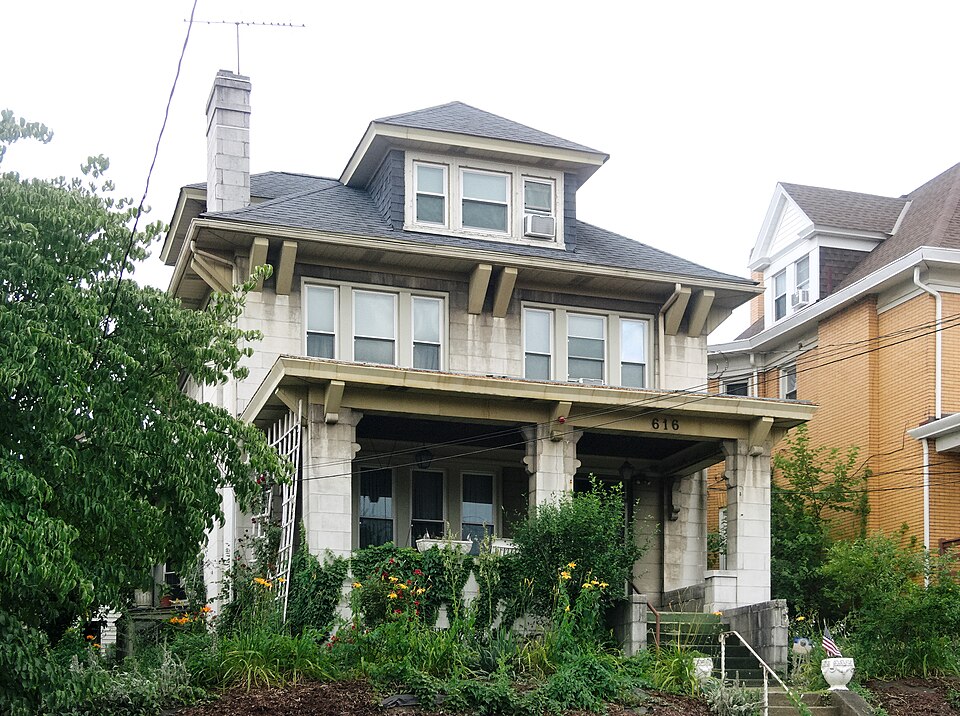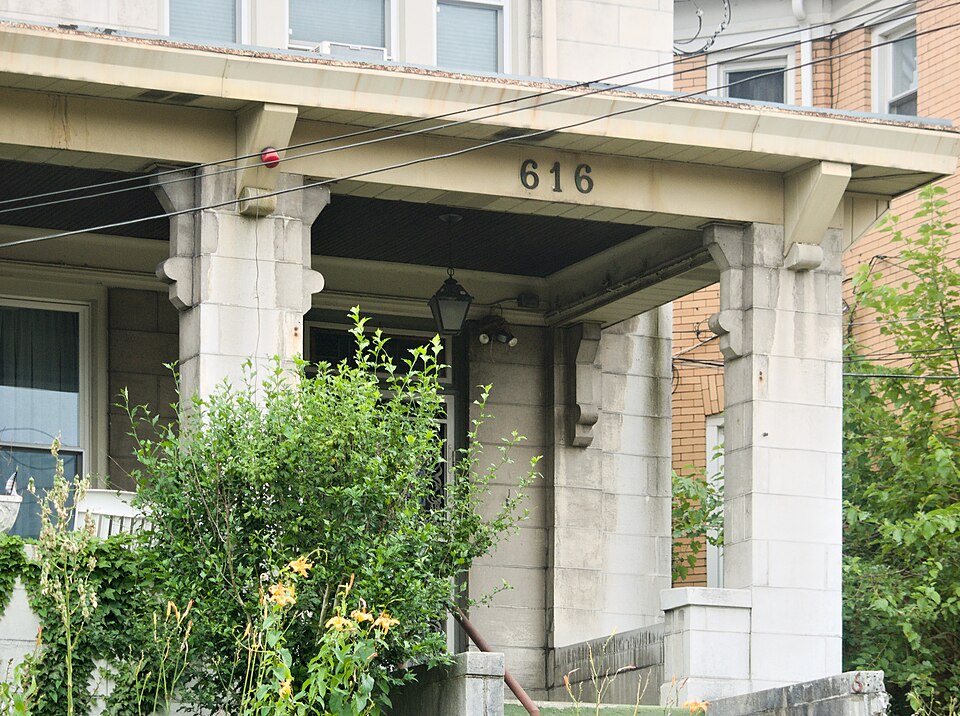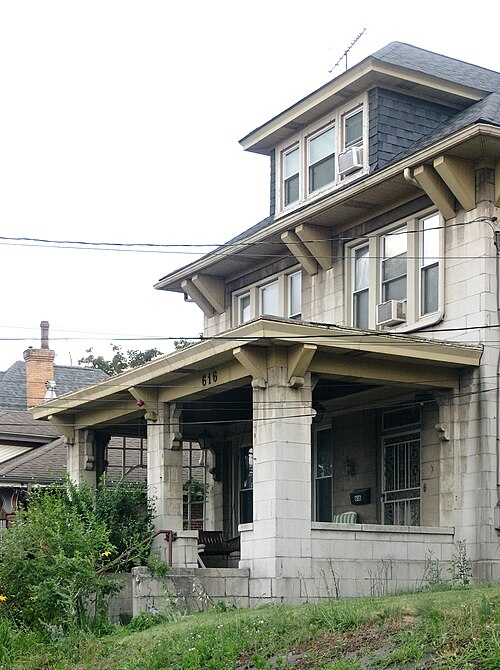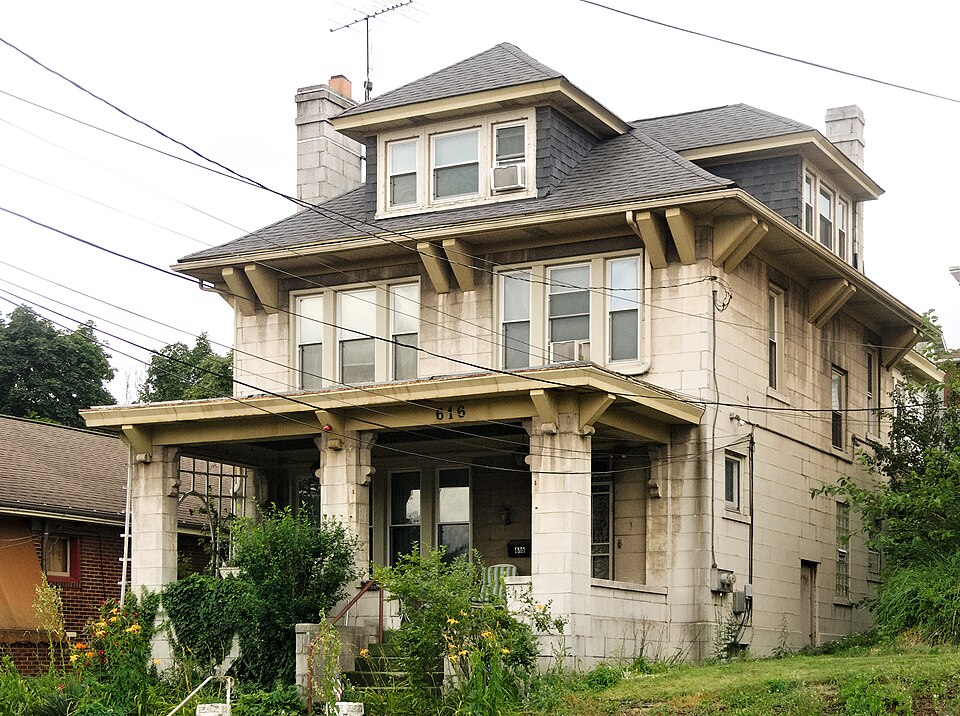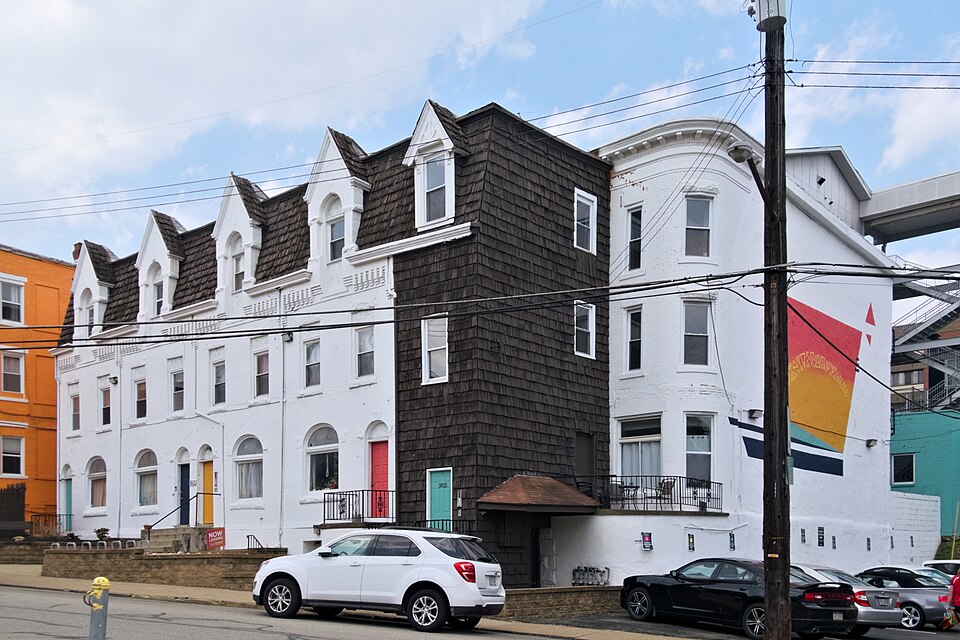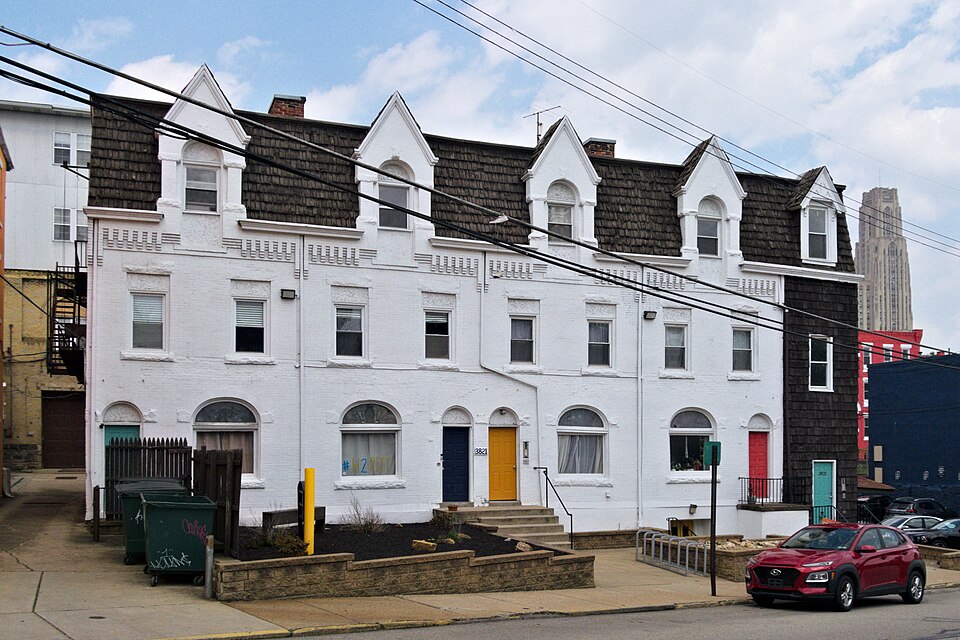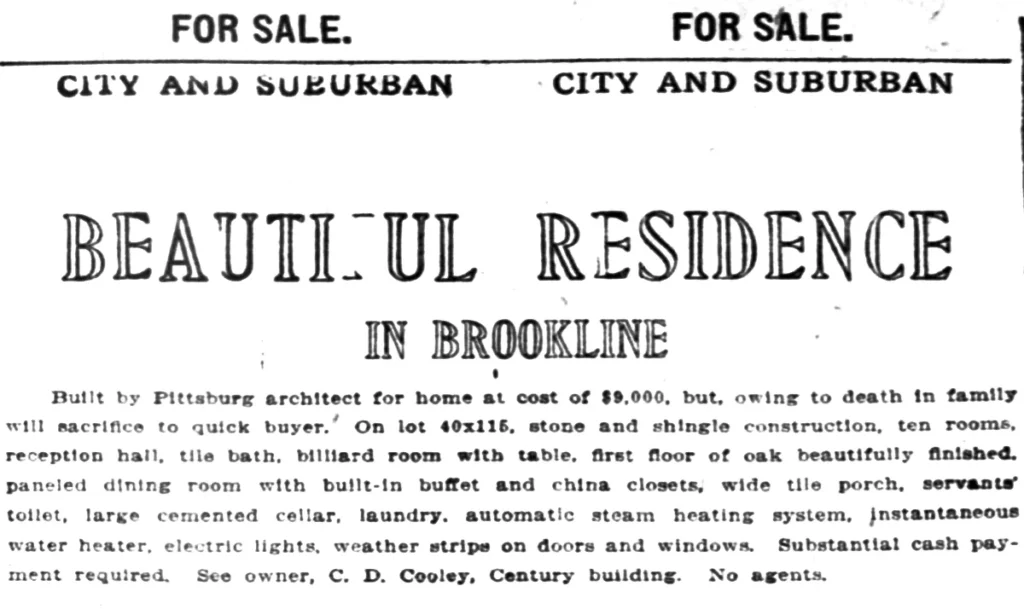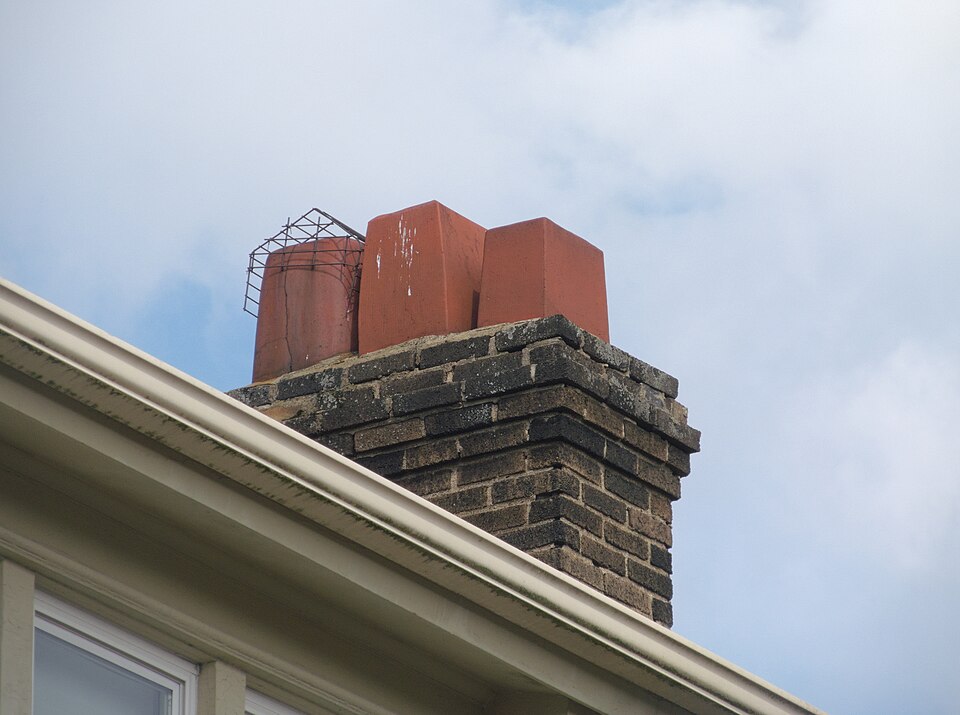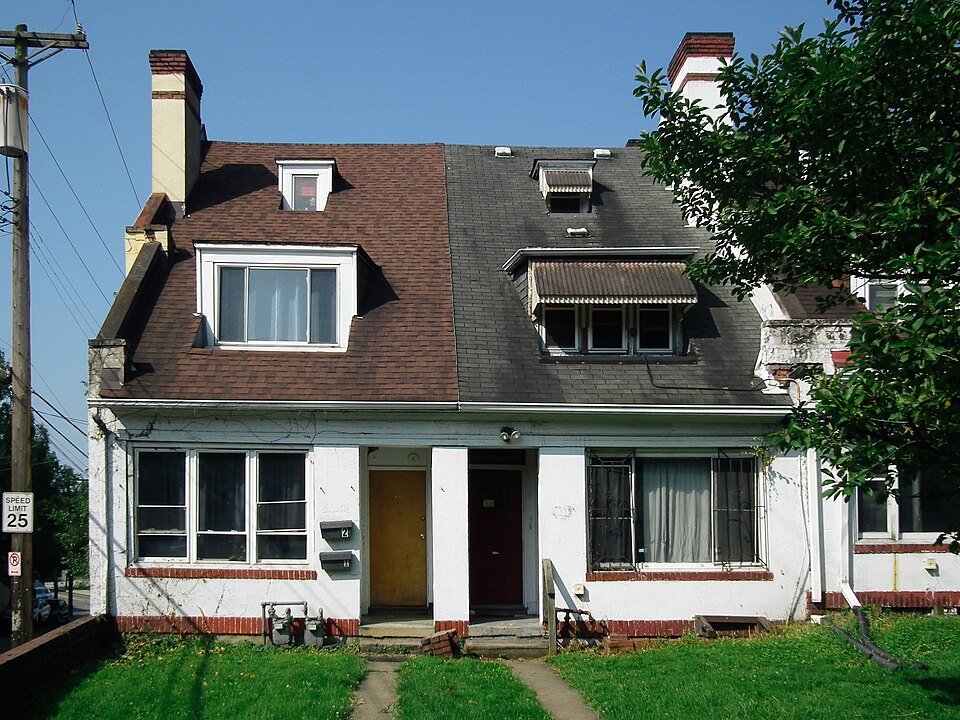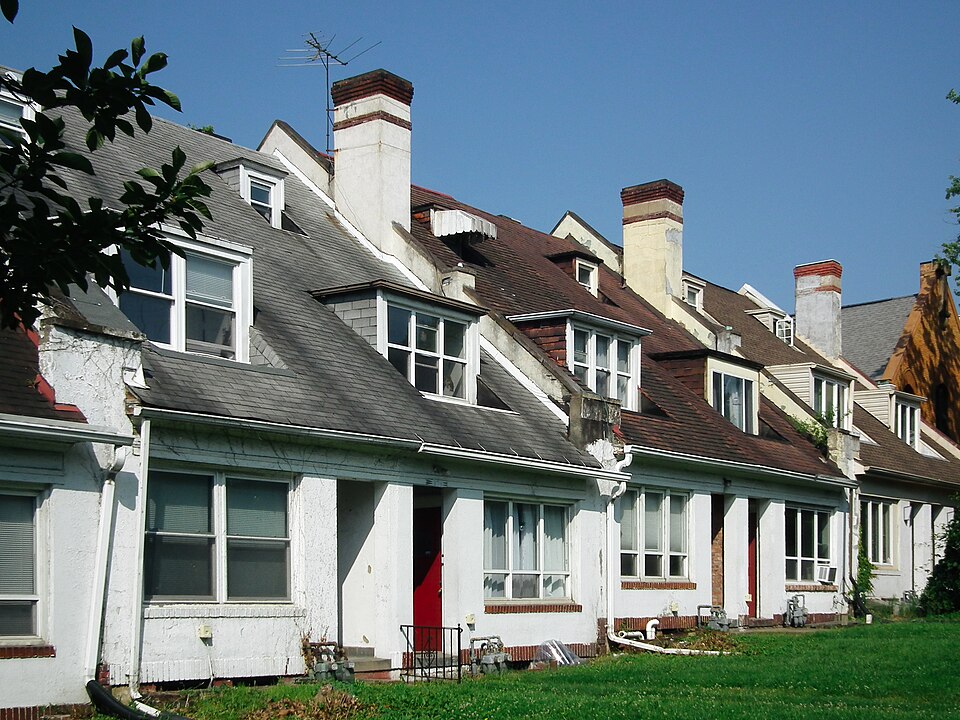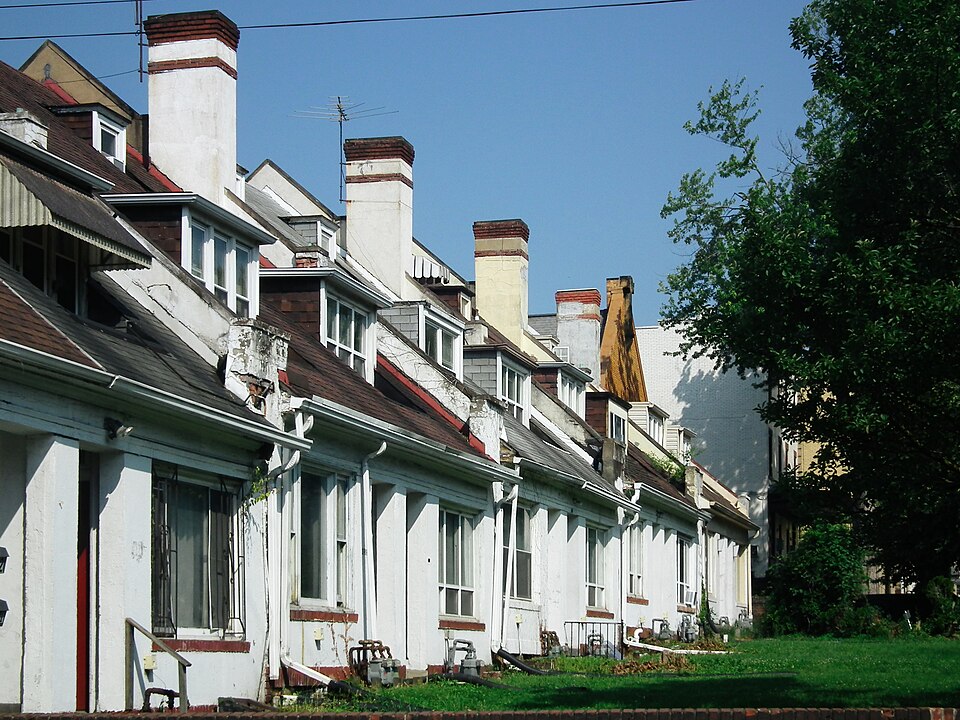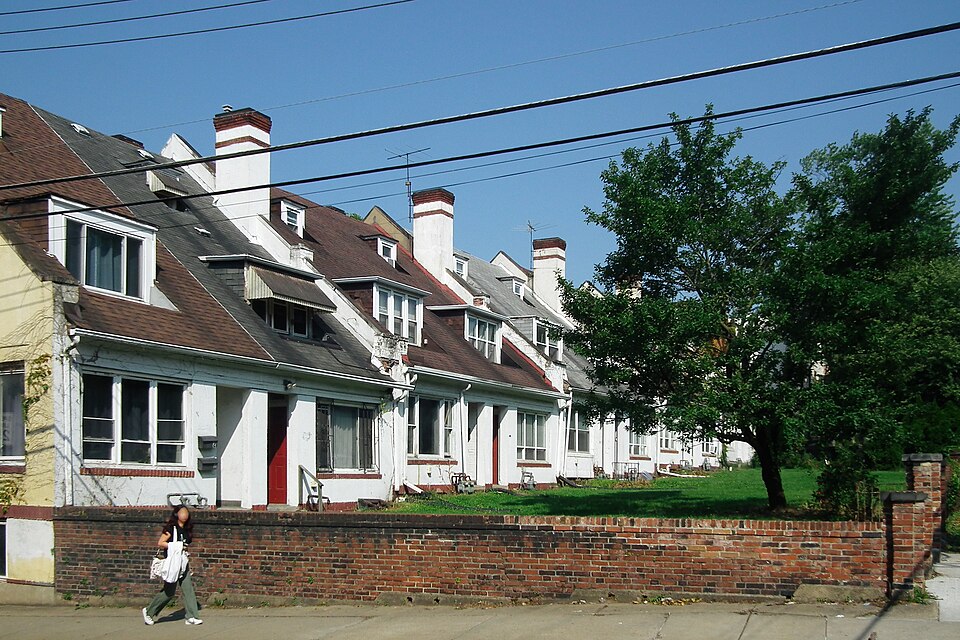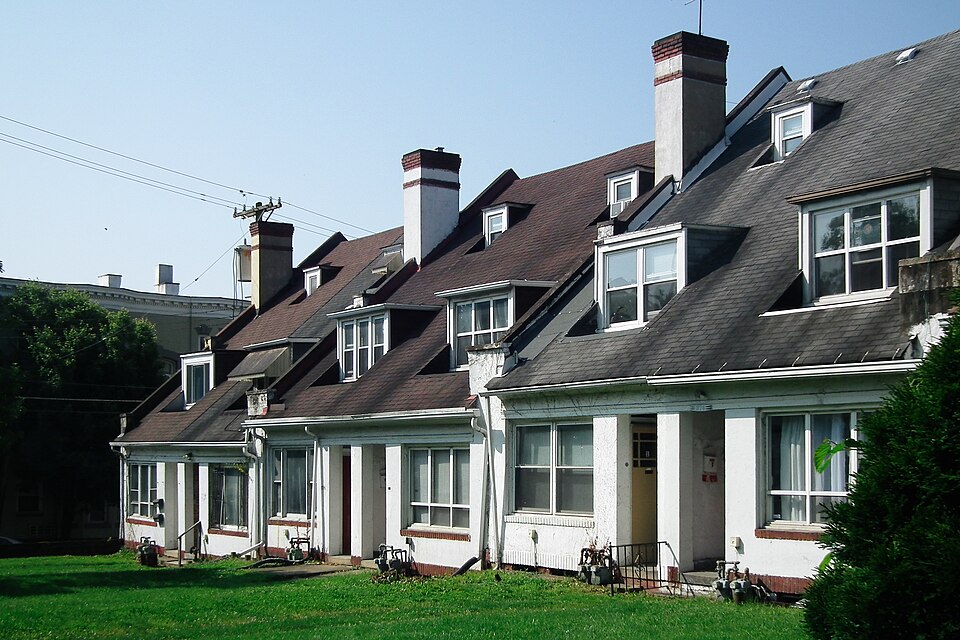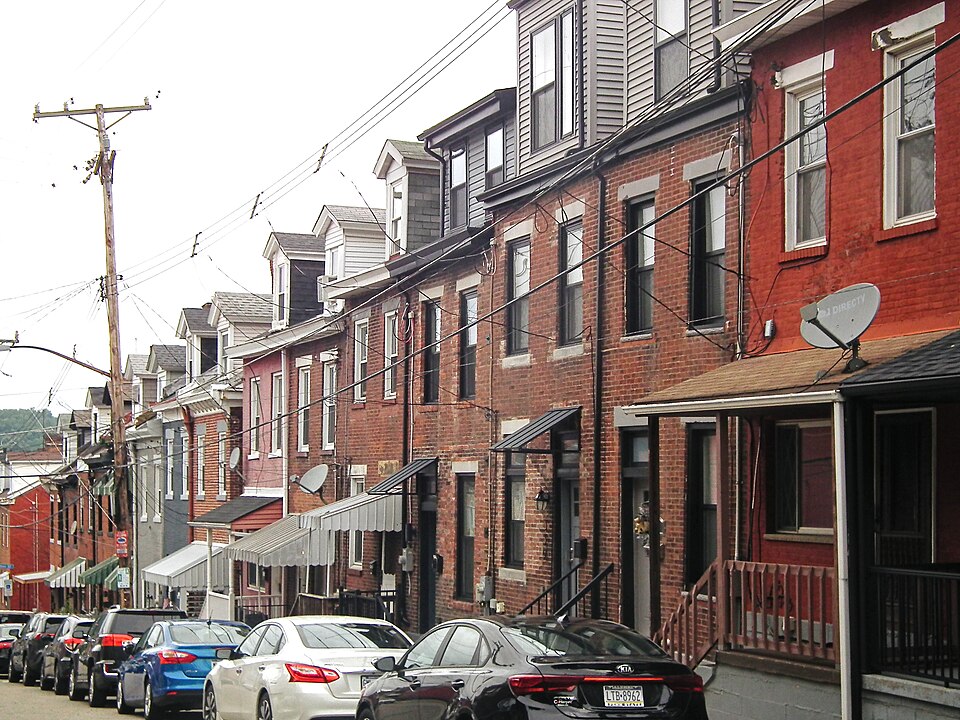
Here’s a house in an eclectic style made up of bits of other eclectic styles, but they all fit together well. The heavy arches picked out in darker brick remind us of the Rundbogenstil, a word we like to say as often as possible; but the irregular picturesque arrangement of parts takes inspiration from the style that, in defiance of history, was called Queen Anne.


The turret has a well-preserved witch’s cap and a rim of foliage scrollwork.

The oriel and the porch pediment are both decorated with grotesque foliage ornaments.


The house next door is a duplicate, but reversed.

Finally, a house that shares the same general shape, but is distinguished by its shingly top with curved surfaces and ornamental swags and foliage picked out in contrasting paint.

Like many Shadyside houses, this one has automobiles burrowing under the porch.
Comments



